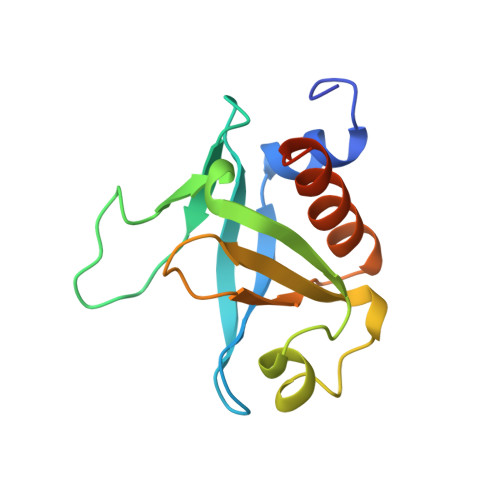Structure of the high affinity complex of inositol trisphosphate with a phospholipase C pleckstrin homology domain.
Ferguson, K.M., Lemmon, M.A., Schlessinger, J., Sigler, P.B.(1995) Cell 83: 1037-1046
- PubMed: 8521504
- DOI: https://doi.org/10.1016/0092-8674(95)90219-8
- Primary Citation of Related Structures:
1MAI - PubMed Abstract:
The X-ray crystal structure of the high affinity complex between the pleckstrin homology (PH) domain from rat phospholipase C-delta 1 (PLC-delta 1) and inositol-(1,4,5)-trisphosphate (Ins(1,4,5)P3) has been refined to 1.9 A resolution. The domain fold is similar to others of known structure. Ins(1,4,5)P3 binds on the positively charged face of the electrostatically polarized domain, interacting predominantly with the beta 1/beta 2 and beta 3/beta 4 loops. The 4- and 5-phosphate groups of Ins(1,4,5)P3 interact much more extensively than the 1-phosphate. Two amino acids in the PLC-delta 1 PH domain that contact Ins(1,4,5)P3 have counterparts in the Bruton's tyrosine kinase (Btk) PH domain, where mutational changes cause inherited agammaglobulinemia, suggesting a mechanism for loss of function in Btk mutants. Using electrostatics and varying levels of head-group specificity, PH domains may localize and orient signaling proteins, providing a general membrane targeting and regulatory function.
- Department of Chemistry, Yale University, New Haven, Connecticut 06510, USA.
Organizational Affiliation:

















